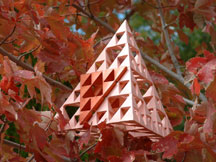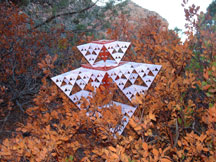Gasket Photography
(See also: Polyhedra Photography)
The contents of this page are © Copyright Gayla Chandler and may
not be used without her permission.
[Click on the images for an enlarged version]

|

|
|
The left image was taken at a commercial trout fishing spot just north of Sedona on Scenic Route 89A. The beautiful
coppery-red bush on the right is a dead or dying Manzanita. Thriving Manzanitas stay green all year long.
|
The contents of this page are © Copyright Gayla Chandler and may
not be used without her permission.
|